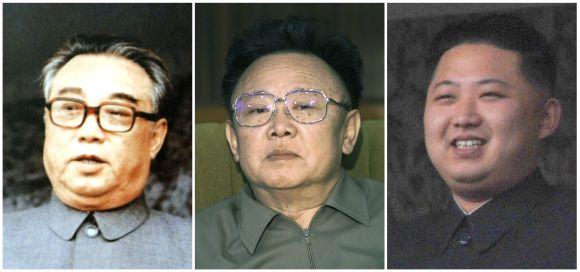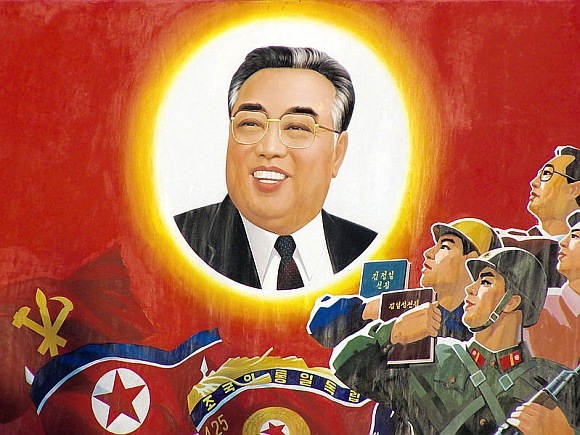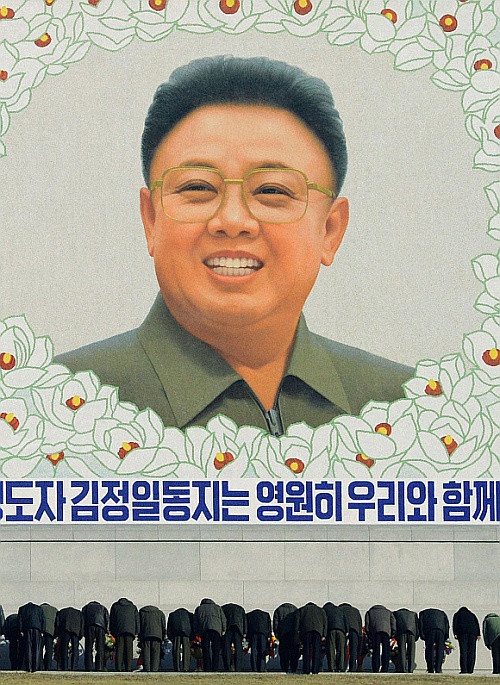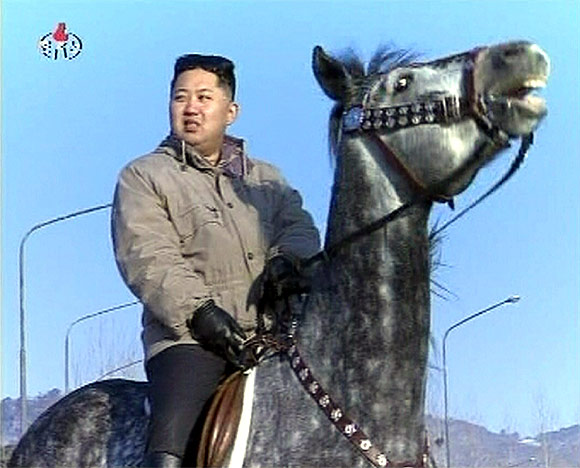 | « Back to article | Print this article |
Dynasty rules: From Kim to Kim in North Korea
In an alarming development, North Korea last month cancelled all non-aggression pacts with South Korea and cut off a hotline with Seoul after the United Nations Security Council unanimously approved new sanctions on Pyongyang to punish it for its February 12 nuclear test.
The announcement ramped up tensions on the Korean peninsula that have surged since the North staged a third nuclear test last month.
The country also threatened a pre-emptive nuclear strike against the United States and all other 'aggressors'. The US responded by saying it was 'fully capable' of defending itself and its allies -- including South Korea -- against any North Korean missile strike.
North Korea's near-absolute international isolation, perpetuated by decades of rule by one Kim or the other, makes it one of the most intriguing countries. Other than horror stories about devastating famines and nightmarish prisons, little is known about the country or its inhabitants.
Rediff.com takes a look at the dictatorial journey of the Kims -- from 'The Great Leader' and the father of the nation Kim Il-sung, to the 'Dear Leader' Kim Jong-il, and what little is known about the 'Great Successor' -- Kim Jong Un.
Click next to read further...
The Great Leader -- Kim Il-sung
Kim Il-sung was the leader of the Democratic People's Republic of Korea, commonly referred to as North Korea, from its establishment in 1948 until his death in 1994.
In 1925, Kim Il Sung fled to Manchuria to escape the Japanese rule of Korea, where he attended a Chinese school. He was arrested and imprisoned at the age of fifteen for being a member of the South Manchurian Communist Youth League.
While fighting Japanese occupation forces in the 1930s, it is said that he adopted the name Kim Il Sung after a famous Korean guerrilla leader.
He was trained in Moscow before World War II, and in 1945 he became chairman of the Soviet-sponsored People's Committee of North Korea (which later became the Korean Workers' party).
Hoping to reunify Korea by force, Kim launched an invasion of South Korea in 1950, thereby igniting the Korean War. His attempt to extend his rule there was repelled by United States troops and other UN forces.
He outlived Russian dictator Joseph Stalin by four decades, Chinese Communist leader Mao Zedong by two, and remained in power during the terms of office of six South Korean presidents, seven Soviet leaders, 10 US presidents, 14 UK prime ministers and 21 Japanese prime ministers.
In 1980 he raised his eldest son, Kim Jong Il, to high posts in the party and the military, in effect designating the younger Kim as his heir.
In June 1994, United States President Jimmy Carter persuaded Kim Il-Sung to freeze his nuclear development programme in exchange for an ease in international sanctions.
Kim IL Sung died on 8th July, 1994. Kim Il-sung was given the posthumous title of president for life.
Click NEXT to read further...
'Dear Leader' -- Kim Jong Il
Kim Jong-il's official biography states he was born in a secret military camp on Baekdu Mountain in Japanese-occupied Korea on 16 February 1942.
Official biographers claim that his birth at Baekdu Mountain was foretold by a swallow, and heralded by the appearance of a double rainbow over the mountain and a new star in the heavens.
The family moved into a former Japanese officer's mansion in Pyongyang, with a garden and pool. Kim Jong-il's brother, "Shura" Kim (the first Kim Jong-il, but known by his Russian nickname), drowned there in 1948.
Unconfirmed reports suggest that five-year-old Kim Jong-il might have caused the accident.
Kim Jong-il was given senior posts in the politburo, the Military Commission and the party Secretariat. And when he was made a member of the Seventh Supreme People's Assembly in February 1982, international observers deemed him the heir apparent of North Korea.
On 24 December, 1991, Kim was also named supreme commander of the North Korean armed forces.
For nearly 20 years, Kim defied and baffled international leaders with his isolated regime's nuclear ambition, inflammatory rhetoric and surprise attacks on South Korea, including the suspected March 2010 sinking of a Southern military ship and the bombing of Yeonpyeong, a South Korea-controlled island in November of that year.
In Kim Jong Il's regime, lakhs of dissenters were thrown into prisons and labour camps located in the countryside, and they are held under brutal conditions.
In September 2010, Kim Jong Il unveiled his third son, the twenty-something Kim Jong Un, as his successor, putting him in high-ranking posts. Kim Jong Il, 70, died on December, 17, 2011, of a heart attack while on a domestic train trip.
Following his death, he was succeeded by his third son Kim Jong-un.
Click NEXT to read further...
The 'Great Successor' -- Kim Jong-un
No official comprehensive biography on the chubby-faced 'Great Successor' has yet been released. Therefore, the only known information on his early life comes from defectors and people who have claimed to witness him in countries such as Switzerland.
The country even claims that their next leader graduated from Kim Il Sung Military University. He was even made a four-star general in 2010, which took place during a meeting of the ruling Workers' Party -- the first time Jong-un appeared publicly.
Kim Jong-un also was given membership on the Central Committee of the party, and appointed vice chairman of the party's Central Military Committee, two important posts his father Kim Jong-il had overseen.
He was publicly declared Supreme Commander of the Korean People's Army on December 24, 2011, and formally appointed to the position on December 30 when the Political Bureau of the Central Committee of the Workers' Party "courteously proclaimed that the dear respected Kim Jong Un, vice-chairman of the Central Military Commission of the WPK, assumed the supreme commandership of the Korean People's Army".
In 2013 Kim re-established his grandfather's style when he made his first New Year's address.
At the extraordinary meeting with his top defence and security officials on January 26, 2013, Kim issued orders on preparations for a new nuclear test and introduced martial law in North Korea effective from 29 January.
On March 7, 2013, North Korea threatened the United States with a 'pre-emptive nuclear attack', and Kim Jong-Un issued a detailed threat to "wipe out" Baengnyeong Island, the scene of previous naval clashes.
North Korea has threatened to sever the phone link -- installed in 1971 -- many times, and has actually done so twice before, South Korea's Unification Ministry noted.
As tensions rise on the peninsula, Kim Jong-un visited military units responsible for launching the 2010 attack on the South Korean island of Yeonpyeong, calling on troops to be ready for a confrontation with the enemy.
TOP photo features of the week
Click on MORE to see another set of PHOTO features...




